Nebraska Extension Weed Management Specialist Rodrigo Werle discusses his recent trip to view Brazilian soybean fields on Market Journal.
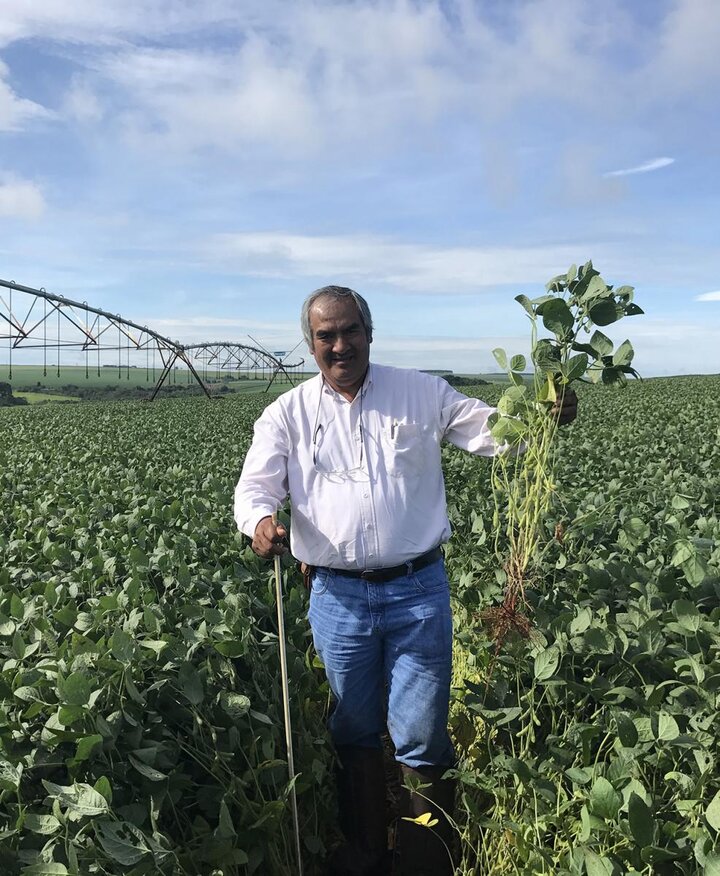

Over the Holidays I went to Brazil for two weeks to visit family and friends. During my trip, I had the opportunity to visit soybean fields and discuss about crop management practices with a consultant, Guido Sanchez (Figure 1), and local producers from southwest São Paulo state (southeastern part of the country). Brazil expects high soybean production this year, and the fields I visited were indeed in great condition.
I visited the operation of some progressive growers and their technology level got my attention. When growing soybeans, there are three major practices these producers prioritize:
- a solid fertility program (in tropical regions, soils are typically acid and nutrient poor because of intense weathering),
- planting quality (i.e., seed distribution and placement in the soil), and
- pest management (including insects, diseases, and weeds).
Winters in southeastern Brazil are typically dry with an average minimum temperature around 50°F in June and July. If producers have irrigation, a cereal crop (e.g., barley, spring wheat) or dry edible beans are typically planted in the winter. Rainfed fields are either planted with a cover crop such as oats or pearl millet or stay in fallow until the rainy season starts in September.
In this region, soybeans are typically planted first in rainfed areas, beginning when the rainy season starts (September/October). In irrigated areas, soybeans are planted after the winter crop is harvested (October/November), and the time of planting is highly dependent on environmental conditions (which impact both the development of the winter crop and conditions for soybean planting). Brazilian soils are highly weathered and most parts of the country have low fertility and low organic matter. Supplementing enough phosphorous and potassium, and enough lime to correct low pH, is a standard practice for soybean producers. Soybeans are typically planted in a 17-inch or 20-inch row spacing (Figure 2), which results in faster canopy closure and greater light interception during the growing season when compared to a 30-inch row spacing, which is a standard practice in Nebraska.
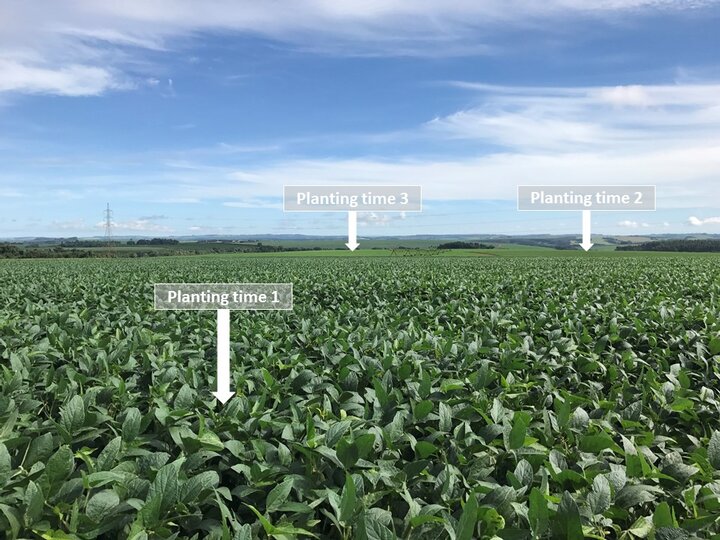
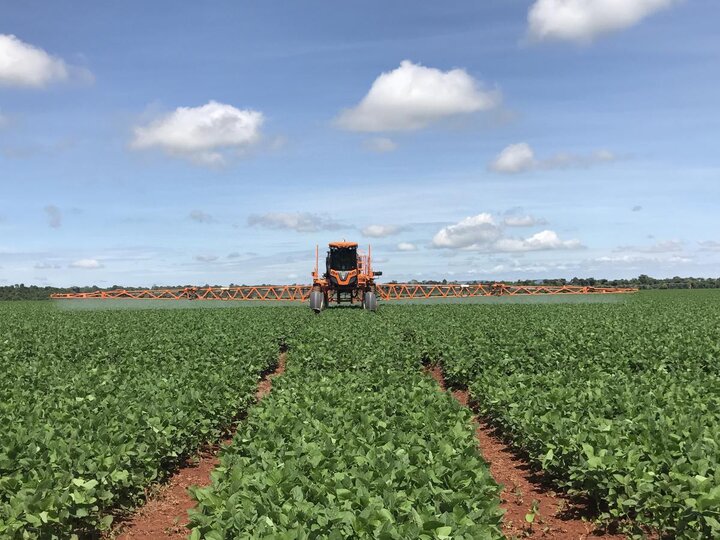
Whiteflies have become a major insect problem. Because soybeans are planted at different times within a common geographical region (Figure 3), the whiteflies tend to migrate from older to younger soybean fields. If not controlled, whiteflies can cause yield losses up to 40%, according to Sanchez.
Soybean rust is a problem across soybean areas of Brazil, and two to three fungicide applications during the growing season have become a standard preventive practice (Figure 4).
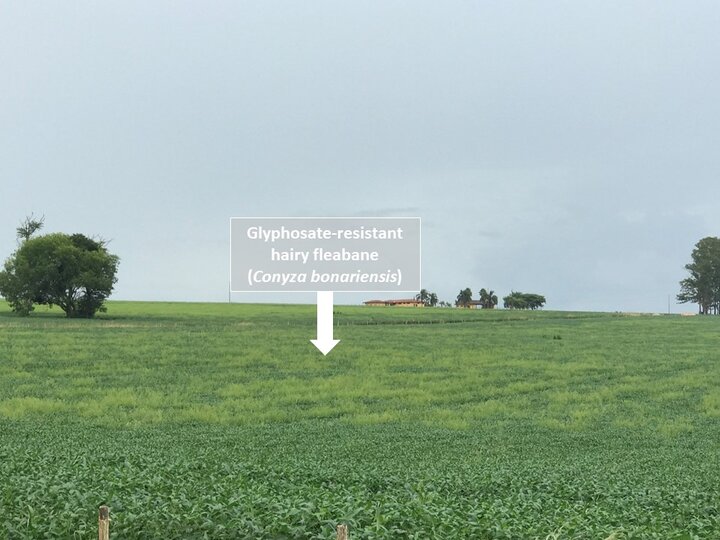
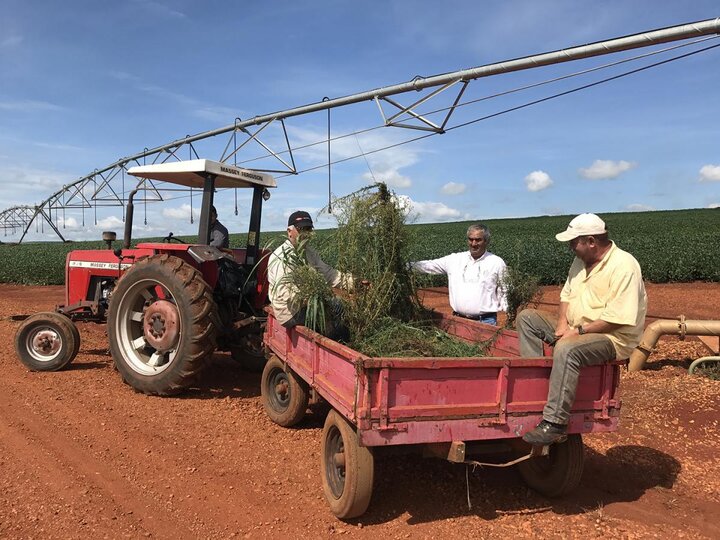
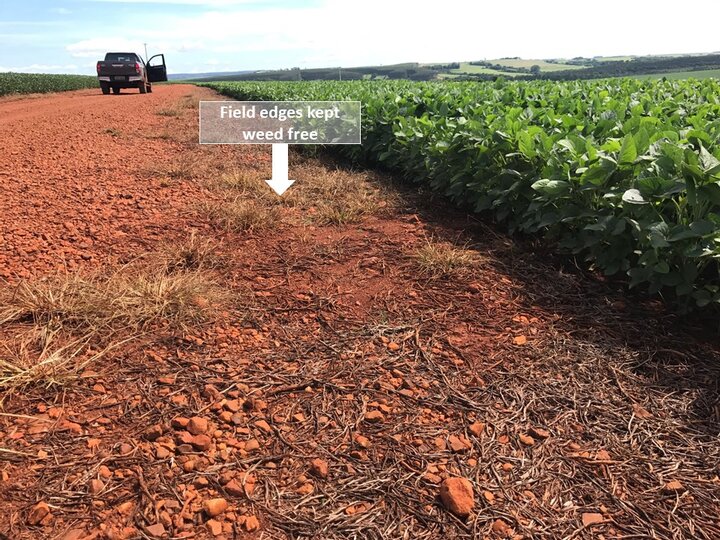
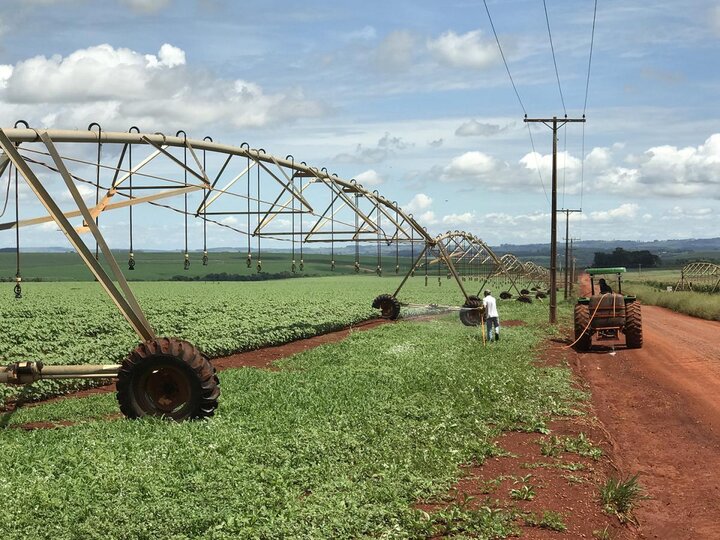
Typical rain on a summer afternoon in Brazil.
The presence of glyphosate-resistant weeds is also a concern in Brazil (Figure 5); however, not to the same extent as in row crop production in the United States. That’s likely due to more diversified crop rotations, where glyphosate is not used postemergence in every crop and herbicide programs are more diversified, which reduces the selection pressure for resistant weeds. Some of the producers had visited farms in the southern United States. They quickly learned how challenging it can be to manage fields infested with resistant weeds and brought the “zero-tolerance” concept back home.
One producer we visited has a crew that goes around the farm once a week to remove all weed escapes within fields (Figure 6). They also spray the field edges and roadsides to prevent additional seed production (Figures 7 and 8). Controlling weeds in field edges has been reported as an effective strategy for managing herbicide-resistant weeds.
I really enjoyed the visit and discussion, and the opportunity to learn more about the challenges Brazilian producers face. Rain is something you don’t get very often during the growing season in western Nebraska, however, during the time I spent in Brazil, we got rain almost every day!
